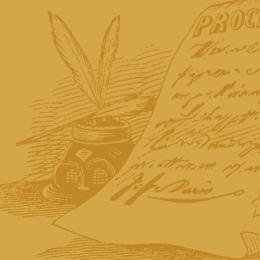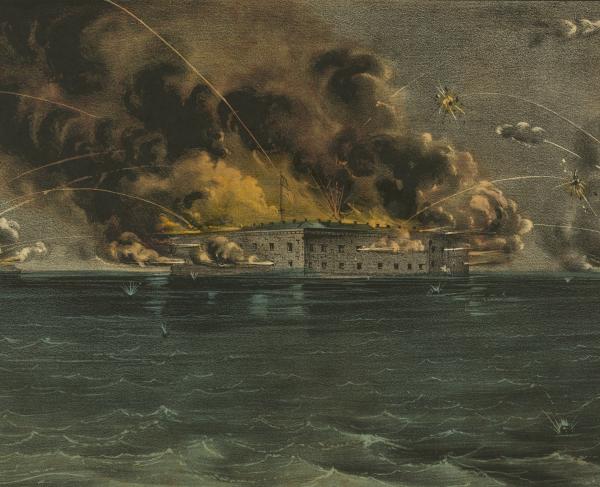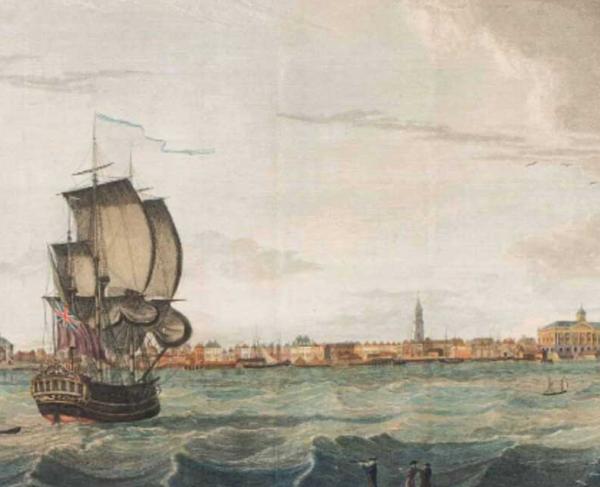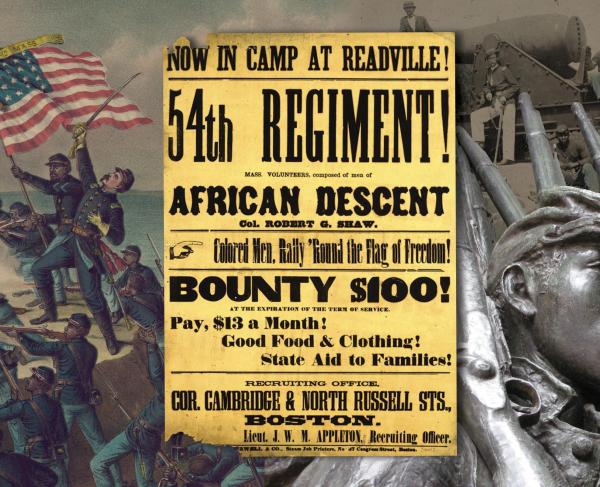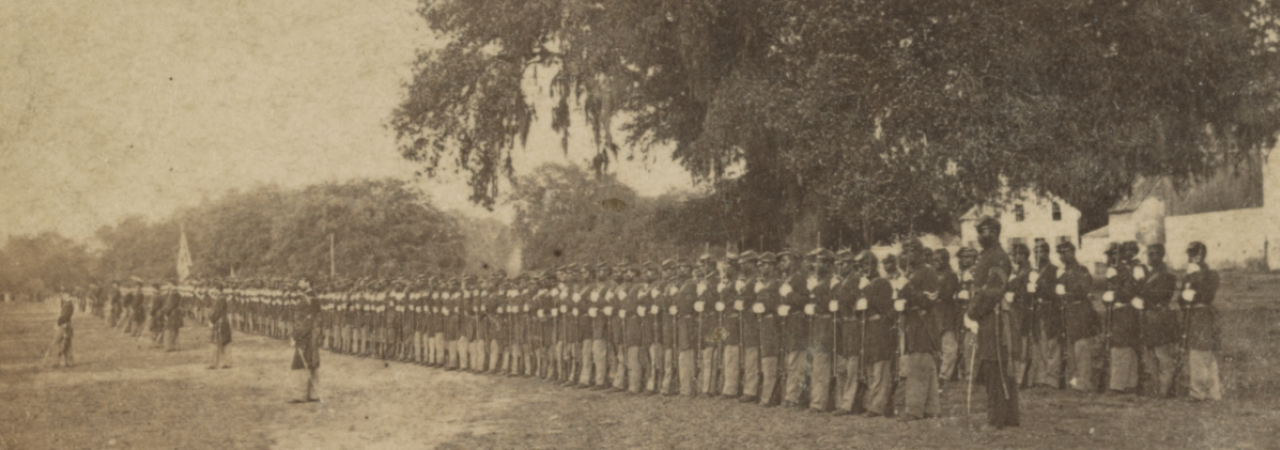
Civil 29th Regiment, Connecticut Volunteers, U.S. Colored Troops, in formation near Beaufort, S.C., where Cooley lived and worked. It was Connecticut’s first African American regiment.
African Americans were freemen, freedmen, slaves, soldiers, sailors, laborers, and slaveowners during the Civil War. As a historian, I must be objective and discuss the facts based on my research. Some of our history may be different from how it has been previously taught and some of it is not very pretty.
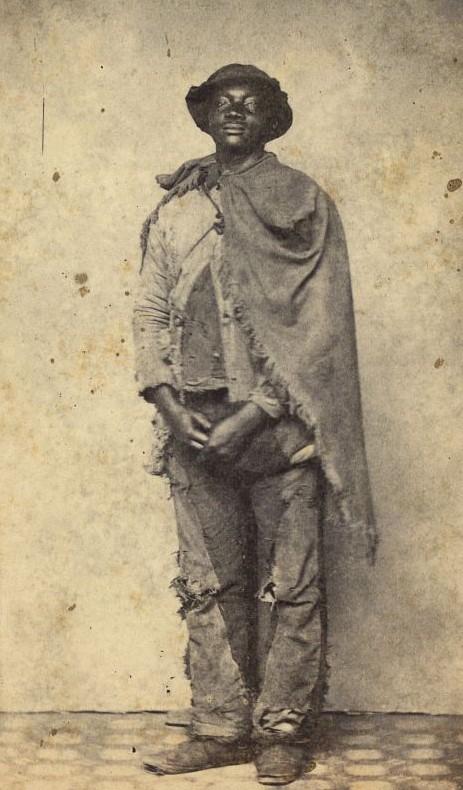
In 1860, both the North and the South believed in slavery and white supremacy. Although many northerners talked about keeping the federal territories free land, they wanted those territories free for white men to work and not compete against slavery. The two parts of the country had two very different labor systems and slavery was the economic system of the South. Its four million slaves were valued between three and four billion dollars, in 1860.
The South seceded from the United States because they felt that their slave property was going to be taken away. When reading the secession documents, the primary reason for secession was to protect their slave property and expand slavery.
There were two broad categories of enslaved people at that time, agricultural slaves, and urban slaves. Most of us are familiar with agricultural slavery, the system of slavery on the farms and plantations. On the plantations, there were house servants and field hands, the house servants were usually better cared for, while field hands suffered more cruelty. Some slaveowners treated their slaves very well, some treated their slaves very cruelly and some were in between the extremes. Black slaveowners generally owned their own family members in order to keep their families together.
Field hands generally worked in the fields from sunrise to sunset and were generally watched by their slaveowners and or overseers. House servants were much closer to the families who owned them and in many cases were very loyal to their masters’ families. In some cases, the house servants were related to these families.
Slaves and free Blacks were often classified by their percentage of white blood. For example, mulattos are half-white, quadroons are one-fourth Black, and octoroons are one-eighth Black. The enslaved people in these categories were more valuable than those of pure African descent.
Urban slaves had much more freedom, as they lived and worked in the cities and towns. Although some plantation slaves had become craftsmen, most of the urban slaves were craftsmen and tradesmen. These slaves were rented by their slaveholders to others, usually for a year at a time. They worked in factories, stores, hotels, warehouses, in houses and for tradesmen. In some cases, these enslaved people would earn money for themselves, if they worked more hours or were more productive than their rental contract requirements. They were able to work with free Blacks and were able to learn the customs of white Americans.
There was a coalition of people, Black and white, Northerners and Southerners that formed a society to colonize free Blacks in Africa. The American Colonization Society (ACS) was able to keep this mixture of people together because the various factions had different reasons for wanting to achieve the goals of this society. They founded Liberia and by 1867, they had assisted approximately 13,000 Blacks to move to Liberia. Some of the ACS really wanted to help Blacks and thought that they would fare better in Africa than America, but the slaveholders thought free Blacks were a detriment to slavery and wanted them removed from this country. The ACS survived from 1816 until it formally dissolved in 1964. In fact, even President Abraham Lincoln believed that this would be a solution to the problem of Blacks being freed during the Civil War. He found out that this was not the solution to the problem after a failed colonization attempt in the Caribbean in 1864.
Abolitionists, a very vocal minority of the North, who were anti-slavery activists, pushed for the United States to end slavery. After the John Brown Harper’s Ferry raid of 1859, Southerners thought that the majority of Northerners were abolitionists, so when moderate Republican Abraham Lincoln was elected President in 1860, they felt that their slave property would be taken away.
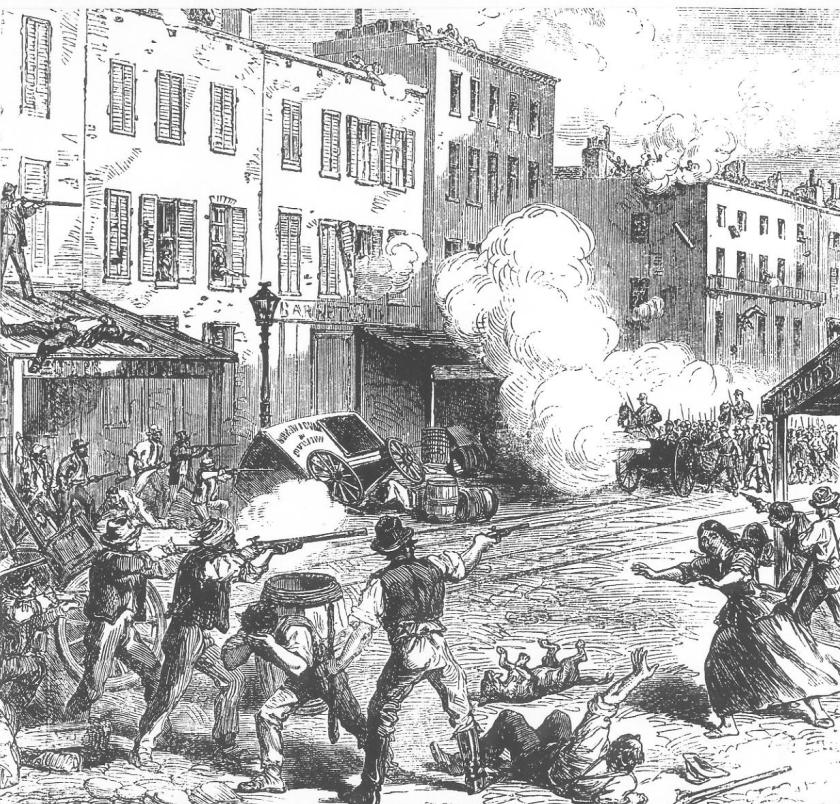
In the pre-1800 North, free Blacks had nominal rights of citizenship; in some places, they could vote, serve on juries and work in skilled trades. As the need to justify slavery grew stronger and racism started to solidify, most of the northern states took away some of those rights. When the northwestern states came into being, Blacks suffered more severe treatment. In Ohio, Blacks could not live there without a certificate proving their free status. Illinois had harsh restrictions on Blacks entering the state and Indiana tried barring them altogether. There was mob violence against Blacks from the 1820s up to 1850, especially in Philadelphia where the worst and most frequent mob violence occurred. City officials refused to protect Blacks and blamed African Americans for their “uppity” behavior.
Free African Americans in the North and the South faced racism. White people, no matter how poor, knew that there were classes of people under them – namely Blacks and Native Americans. Most white Americans defended slavery as the natural condition of Blacks in this country. Most immigrants in the North did not want to compete with African Americans for jobs because their wages would be lowered. This created animosity between Blacks and immigrants, especially the Irish – who killed many Blacks in the draft riots in New York City in 1863.
African Americans and their white allies in the North, created Black schools, churches, and orphanages. They also created mutual aid societies to provide financial assistance to Blacks. The Underground Railroad aided many escaped enslaved people from the South to the North, who were able to get support from the abolitionists.
In the North, most white people thought about Blacks in the same way as people of the South. The many immigrants that entered the country for a better life, considered Blacks as their rivals for low paying jobs. Many of the northwestern states and the free territories did not want slavery in their areas. Not because they wanted freedom for Blacks, but they wanted to have free areas for white men, and exclude Blacks in those states and territories, altogether. Blacks would drive down the wages for free white men. Illinois and Kansas represent two such states.
However, Blacks still wanted to fight for the Union army in the Civil War! Many wanted to prove their manhood, some wanted to prove their equality to white men, and many wanted to fight for the freedom of their people.
The North began to change its mind about Black soldiers in 1862, when in July Congress passed the Second Confiscation and Militia Acts, allowing the army to use Blacks to serve with the army in any duties required. Some generals used this act to form the first Black regiments. President Lincoln issued the preliminary Emancipation Proclamation in September 1862 to take effect on January 1, 1863. The Emancipation allowed Blacks to serve in the army of the United States as soldiers. In May 1863, the Bureau of Colored Troops was formed, and all of the Black regiments were called United States Colored Troops.
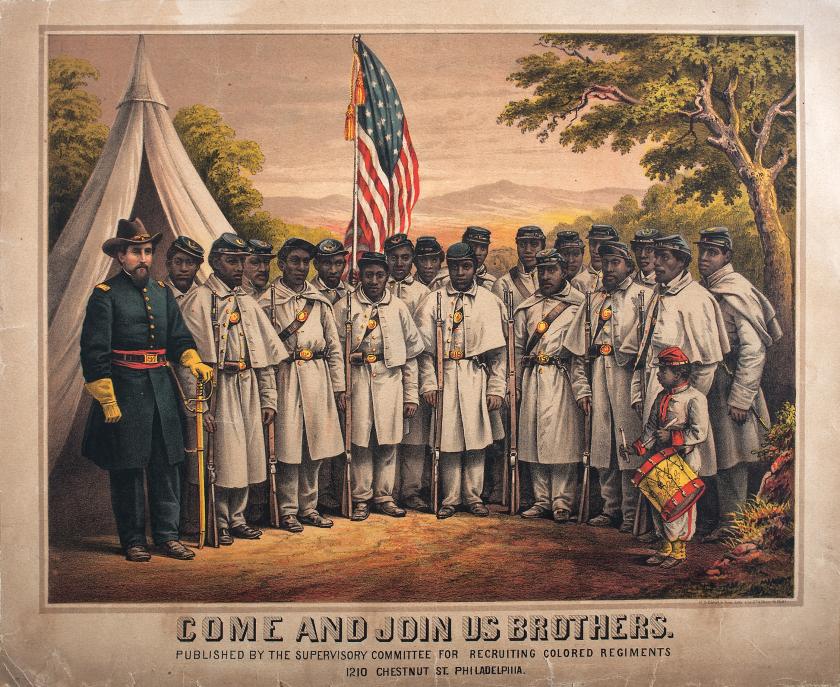
More than 200,000 Black men serve in the United States Army and Navy. The USCT fought in 450 battle engagements and suffered more than 38,000 deaths. Significant battles were Nashville, Fort Fisher, Wilmington, Wilson’s Wharf, New Market Heights (Chaffin’s Farm), Fort Wagner, Battle of the Crater, and Appomattox.
I want to make a special point here, the Emancipation Proclamation did not free all of the slaves in the country, although many people even today believe that it did. It only freed slaves in the Southern states still in rebellion against the United States. So, the Border States and territory already captured by the Union army still had slavery. The 13th Amendment freed all the slaves in the country in 1865.
Some important African American people during the Civil War era were:
- Frederick Douglass was the son of a slave and a white man; since his mother was a slave – he was a slave. He became the most important African American of the Civil War era. He was both an urban and agricultural slave, who was treated fairly well in the city but cruelly on the plantation. Douglass learned to read and write, he learned a trade and escaped to freedom. He became an abolitionist lecturer, an author, a publisher, a recruiter for the United States Colored Troops, a marshal for the District of Columbia, and an ambassador to both Haiti and the Dominican Republic. He criticized President Lincoln and then became a friend of the President.
- Harriet Tubman, at 13 years old was struck in the head by an overseer; she had seizures or sleeping spells for the rest of her life. She is called “Moses,” and led many fellow slaves to freedom (100-300). During the Civil War, she served with the Union army as a scout, spy, nurse, cook, and laundress. She led Union raids in South Carolina, freeing slaves in those areas while assisting the USCT infantry.
- William Wells Brown was born into slavery on November 6, 1814, to a slave named Elizabeth and a white planter, George W. Higgins. He escaped in Ohio and added the adopted name of Wells Brown - the name of a Quaker friend who helped him. He became a conductor for the Underground Railroad, lecturer on the antislavery circuit in the United States and Europe, and a historian. He wrote his autobiography, which was a bestseller second only to Frederick Douglass’ autobiography. He also wrote The Negro in the American Rebellion (1867) which is recognized as the first book about Black soldiers in the Civil War.
- Elizabeth Keckley was the daughter of a slave and her white owner, she was considered a “privileged slave,” learning to read and write despite the fact that it was illegal for slaves to do so. She became a dressmaker, bought her freedom, and moved to Washington, D. C. In Washington, she made a dress for Mrs. Robert E. Lee; this sparked a rapid growth for her business. She made dresses for Mrs. Jefferson Davis and Mrs. Abraham Lincoln, becoming a loyal friend to Mary Todd Lincoln. Keckley also founded the Contraband Relief Association, an association that helped slaves freed during the Civil War.
- Charlotte Forten Grimke was born into a wealthy Black abolitionist family in Philadelphia, PA,. She was a well-educated writer and poet, who went to Sea Island South Carolina to teach the liberated slaves to read and write. She later married the mulatto half-brother of the famous abolitionists Grimke sisters.
- Sgt. Christian Fleetwood served in the 4th USCT. On September 29th during the Battle of Chaffin’s Farm, he caught the American flag before it hit the ground, after the color bearer was shot down. He continued to carry the flag and rallied his men. His bravery earned him the Medal of Honor.
- Sgt. William Carney served in the 54th Massachusetts Infantry. On July 18, 1863, at the Battle of Fort Wagner, he earned the Medal of Honor for saving the American flag, despite being severely wounded. He carried the flag all the way to the entrance of the fort before he retreated.
- Sergeant Nimrod Burke of the 23rd USCT, started the war as a civilian teamster and scout for the 36th Ohio Volunteer Infantry in April 1861. In 1864, he enlisted in the 23rd United States Colored Troops. He was one of many Black men who served with the Union army in another capacity, then served with the United States Colored Troops.
African Americans were more than enslaved people during the Civil War. Many became productive citizens, including Congressmen, a senator, a governor, business owners, tradesmen and tradeswomen, soldiers, sailors, reporters, and historians. Research African American history in libraries and museums, to find out the contributions made during and after the Civil War.
Further Reading
- A Slave No More: Two Men Who Escaped to Freedom, Including Their Own Narratives of Emancipation By: David W. Blight
- A Brave Black Regiment: The History of the Fifty-Fourth Regiment of Massachusetts Volunteer Infantry 1863-1865 By: Capt. Luis F. Emilio
- Slavery and the Making of America By: James Oliver Horton and Lois E. Horton
- Battle Cry of Freedom: The Civil War Era By: James M. McPherson
- The Negro's Civil War: How American Blacks Felt and Acted During the War for the Union By: James M. McPherson
Help raise the $429,500 to save nearly 210 acres of hallowed ground in Virginia. Any contribution you are able to make will be multiplied by a factor...
Related Battles
4,150
1,750
3,061
6,000
